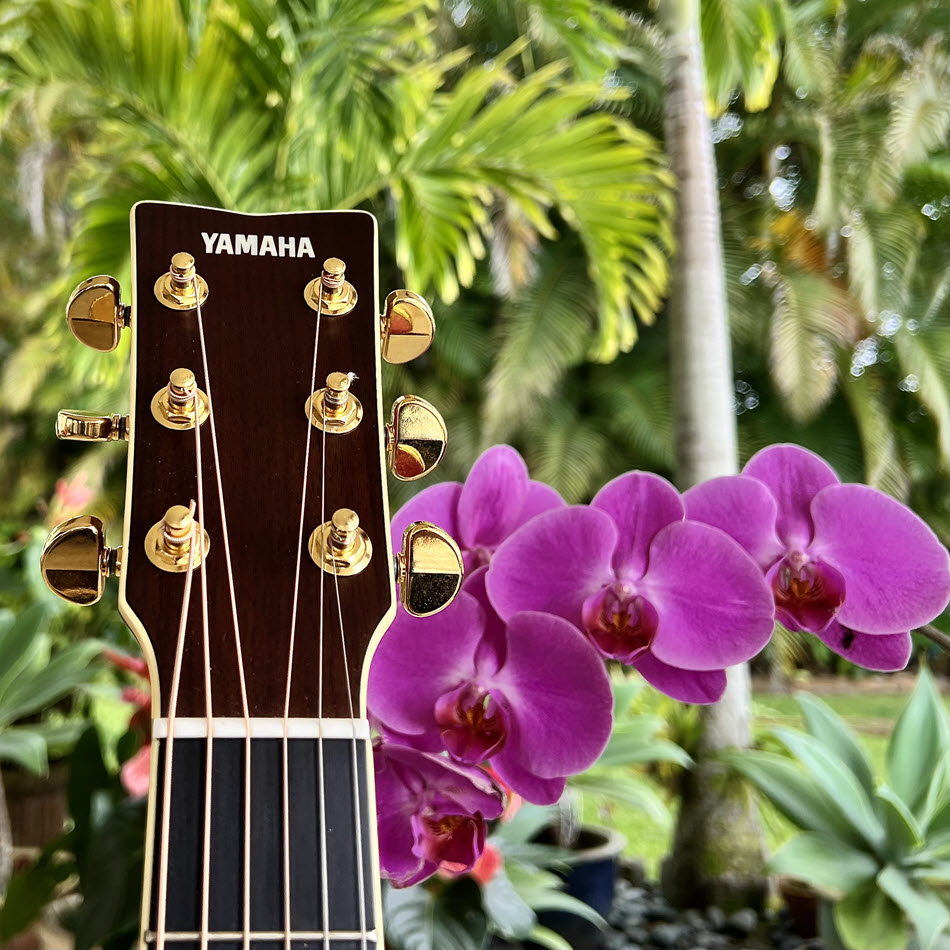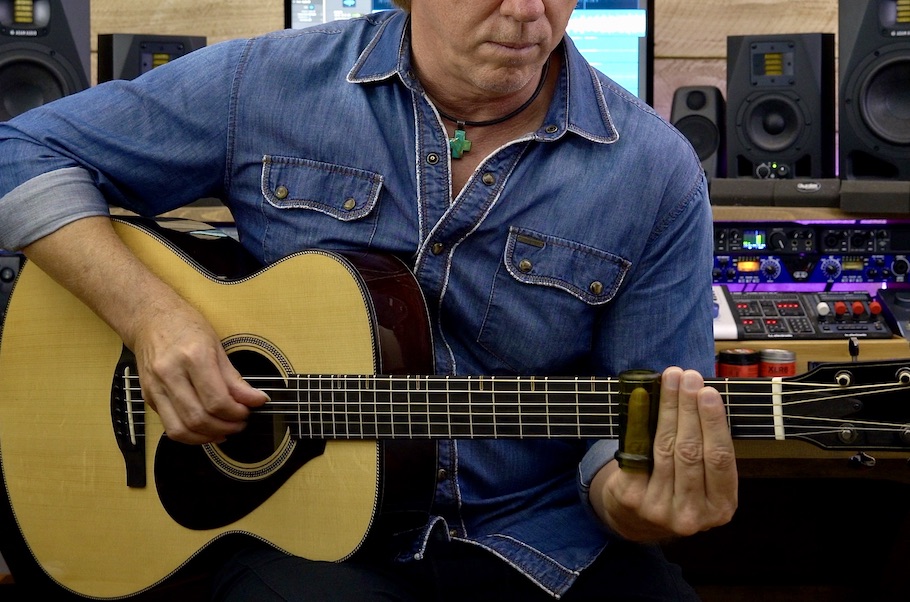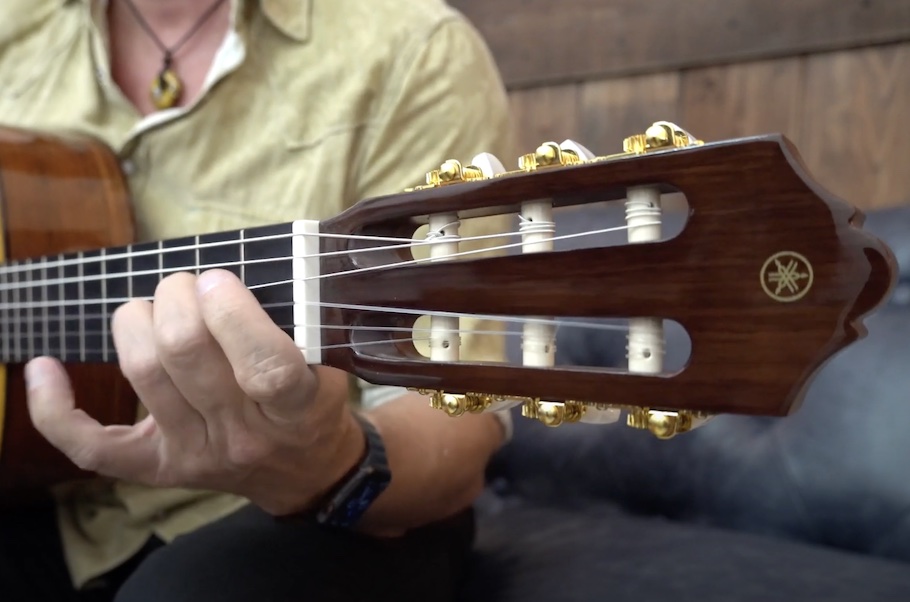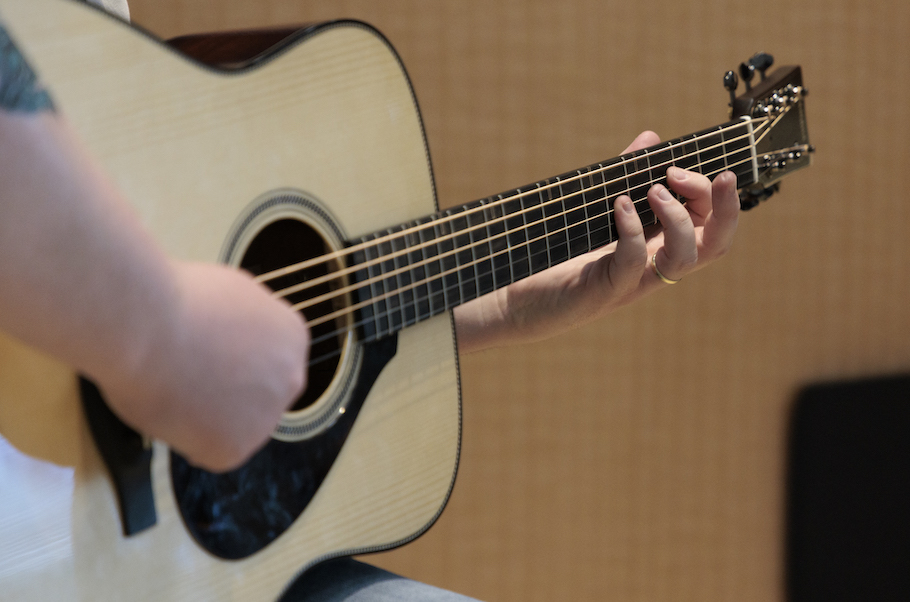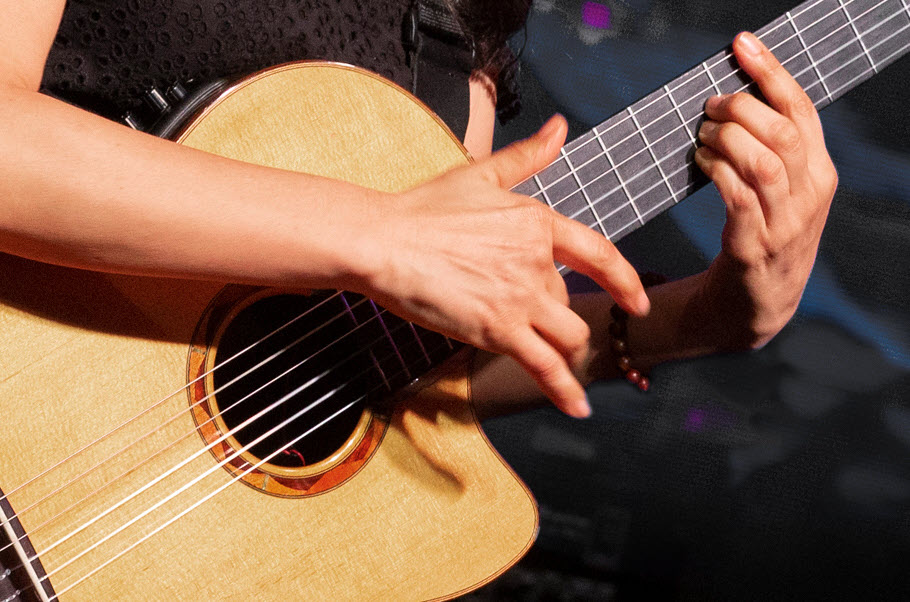Adding Atmosfeel™ to the Equation: FG9 X and FS9 X Acoustic/Electric Guitars
Amplifying extraordinary acoustic tones faithfully.
In 2023, Yamaha launched their flagship line of FG9 dreadnought acoustic guitars, followed in 2024 with the smaller concert-body FS9.
Both guitars represent the pinnacle of Japanese craftsmanship and acoustic tone. They feature a solid Adirondack spruce tops, with the option of either solid Indian rosewood or solid African mahogany back and sides.
These lightweight, handcrafted instruments quickly found favor with the acoustic guitar elite, professional player and serious semi-pro looking for the absolute best in acoustic tone. I have had both guitars in my studio, and can validate just how beautiful they sound in front of a microphone.
But what happens when you’re playing live and the microphones available are of less than optimum quality? (This sometimes happens even in home studios.) Enter the just-released FG9 X and FS9 X, both of which enable you to amplify that great tone onstage without the need for microphones at all.
That’s because the FG9 X and FS9 X are identical to their all-acoustic siblings, but come equipped with the amazing Atmosfeel™ pickup system. Intrigued? Read on …
What is Atmosfeel?
Anyone who’s been following my postings on a regular basis will know that I often rave about FSX and FGX Red Label Series acoustic guitars (particularly the FSX3 — a workhorse both in my studio and onstage), which also come equipped with Atmosfeel — the name Yamaha gives to their proprietary three-way pickup system.
Here’s how Atmosfeel works:
- Under the bridge, there’s a piezo sensor to capture the low frequencies
- There’s also a small built-in microphone to capture the midrange frequencies, as well as some of the lows
- Finally, there’s a thin sheet sensor to capture the high frequencies coming from the guitar’s Adirondack spruce top
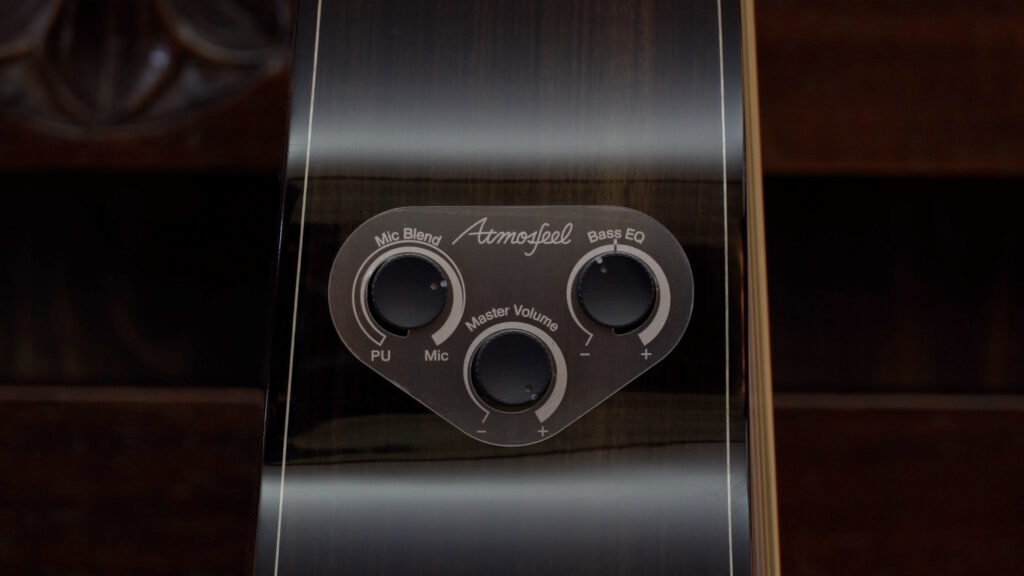
There are three Atmosfeel rotary dial controls, all located on the upper side of the guitar (facing the player). The first allows you to blend the microphone signal with the output of the two sensors. This way, you can choose to not engage the microphone at all, or to blend in as much microphone as you want.
The second rotary dial is the master volume. A green LED lights up on this control when you plug a jack into the end-pin socket.
The third rotary dial governs the bass frequency. This is a set bass frequency that you can choose to cut or boost from its center detent.
All Atmosfeel controls are super intuitive and easy to access during live performance. All you need to do is adjust them based on what you’re hearing from your guitar amp, monitoring system and/or P.A.
Atmosfeel Isn’t Just for Live Performance
I’m lucky in that I have a selection of microphones that I can use to capture the sound of acoustic instruments and vocals in my studio, but sometimes I just want to capture ideas quickly and add other instruments later.
I think most people would agree that, in general, pickups don’t always do a good job of translating the natural sounds of acoustic guitars. Well, let me tell you, the Atmosfeel system in FG9 X and FS9 X guitars sounds absolutely incredible both onstage and when directly recorded to my laptop DAW (Digital Audio Workstation).
It literally takes seconds to dial exactly what you are hearing acoustically into the sound you’re hearing on my studio playback system. In my case, all I had to do was set the bass control to around 11 o’clock (thus cutting the low frequencies slightly); this allowed strumming and picking parts to sit better in the mix. I also like more of the microphone blended into the mix, so I set that at around 2 o’clock on the rotary dial.
Remember that if you opt to use the microphone in your recorded signal, you should monitor it over headphones, as the built-in FG9 X / FS9 X mic is sensitive enough to capture other acoustic sounds in the room and/or the sound of instruments coming from your speakers. On stage you may choose to use less of the microphone, especially at higher volumes, as it may cause feedback problems. (Yamaha provides a sound hole cover to rectify this, if needed.) Also, if you’re an accompanist who plays solo lines, you may find that boosting the bass frequency helps single notes stand out.
Tonewoods
Like their all-acoustic cousins, FG9 X and FS9 X guitars feature solid Adirondack spruce tops. The FG9 MX / FS9 MX models have a solid African mahogany back and sides, while the FG9 RX / FS9 RX has a solid Indian rosewood back and sides. (The X indicates the onboard Atmosfeel pickup system.)
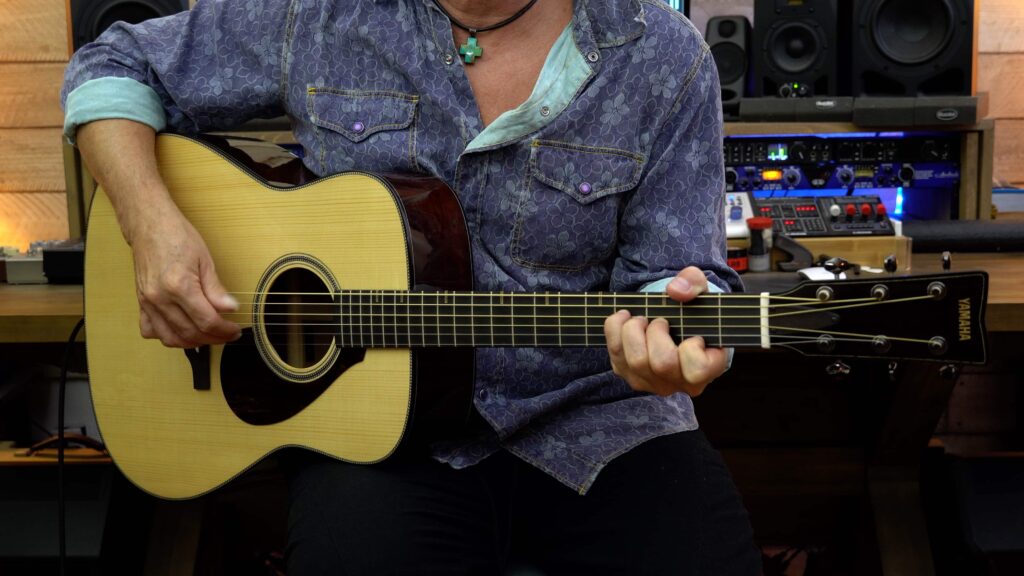
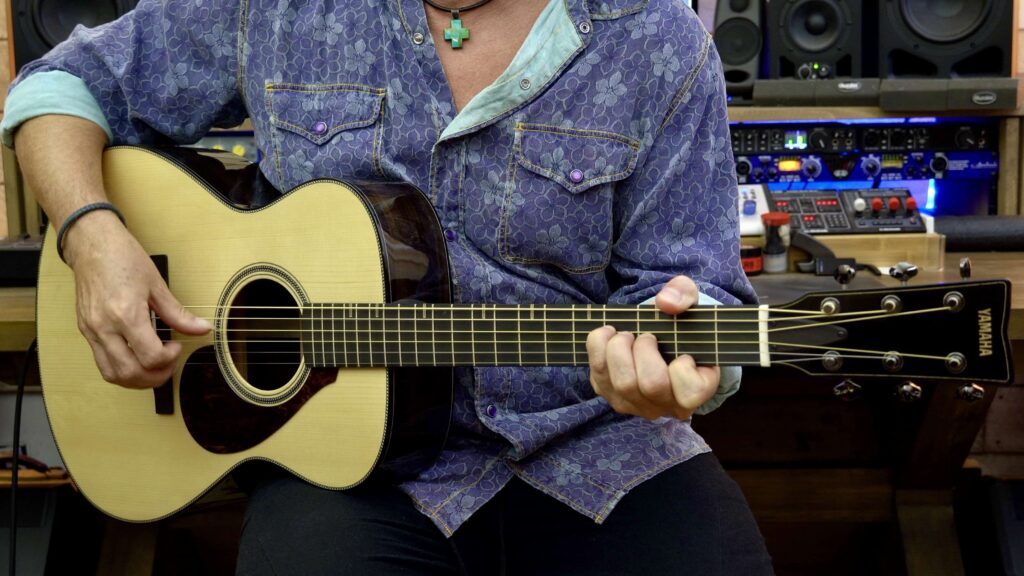
The necks are bolt-on and glued one-piece mahogany with ebony fingerboards, bone nuts and open-gear tuners. The headstock facing on both guitars is ebony with a spruce inlay for the Yamaha logo.
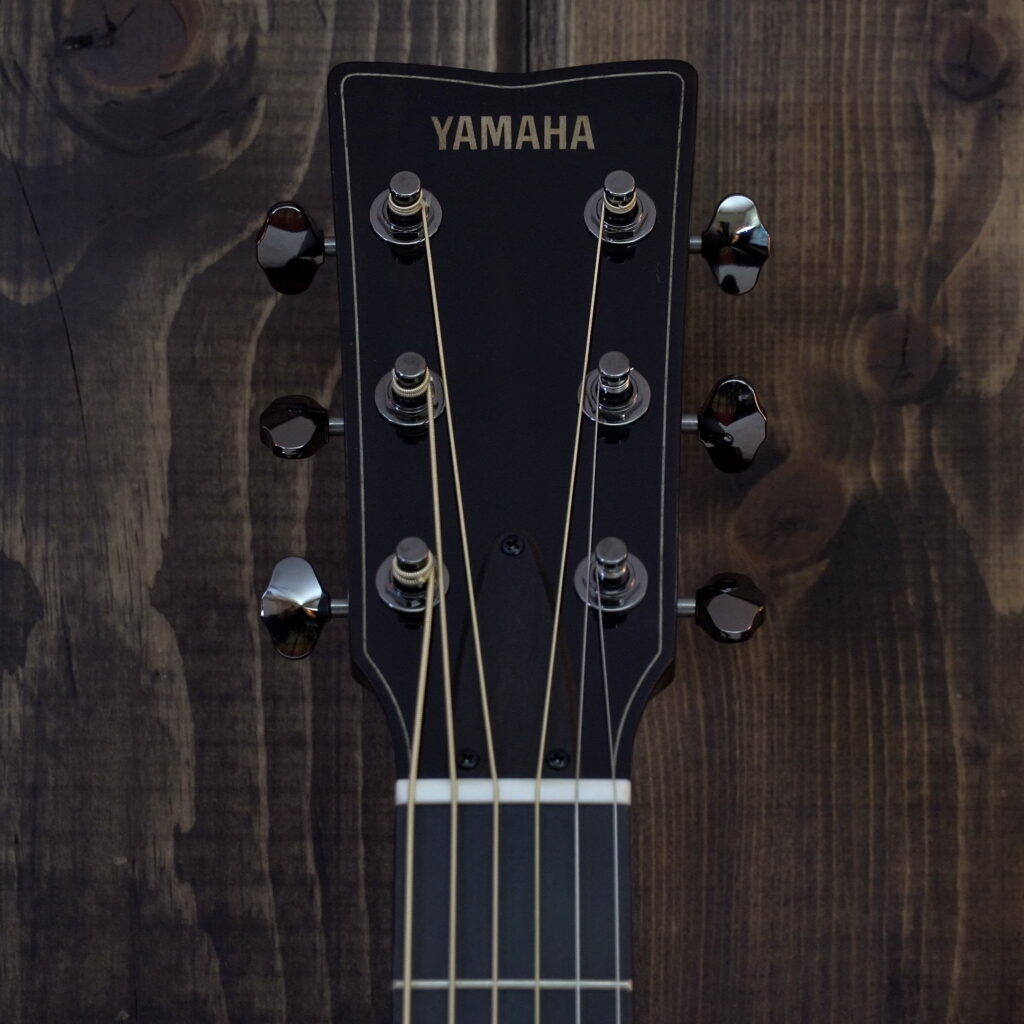
The bridges are also ebony, with a compensated bone bridge saddle.
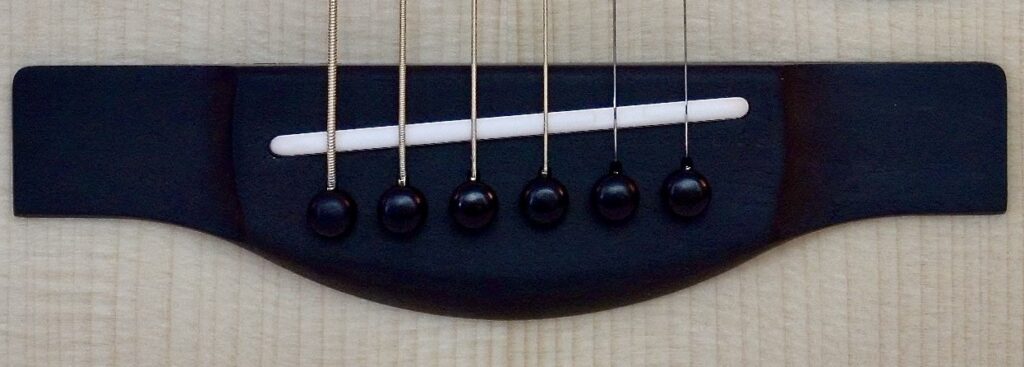
Playability
The solid mahogany neck on all “X” models is finished with a satin nitrocellulose, which makes transitions along the fretboard smooth and stick-free. The fretwork is impeccable, as is the intonation in every position: open, mid-way along the fretboard, and in the upper regions.
The neck dimensions are comfortable for even the newbie guitar player, as well as the electric player making transitions between electric and acoustic guitar onstage or in the studio.
Aesthetics
Yamaha has kept the “bling factor” to a minimum on these understated yet stunning guitars. The tonewoods have something of a natural illumination due to their premium quality, and the thin nitrocellulose finishes not only look great but allow the guitars to resonate fully. All models have highly figured straight grain on their tops, which is visually striking in person and on camera.
The sound hole and purfling are adorned with a traditional Japanese rope-shaped motif, while the fingerboard inlays resemble Kumiki woodworking for each of the fretboard position markers.
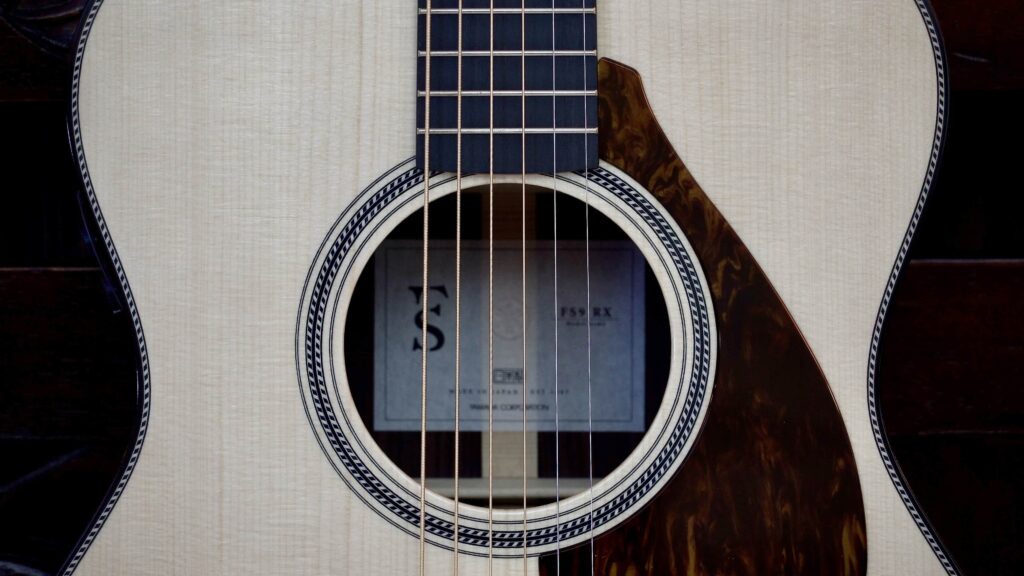
In addition, the mahogany neck on the “R” (rosewood) models has been shaded to transition between the two tonewoods, which is a really lovely touch.
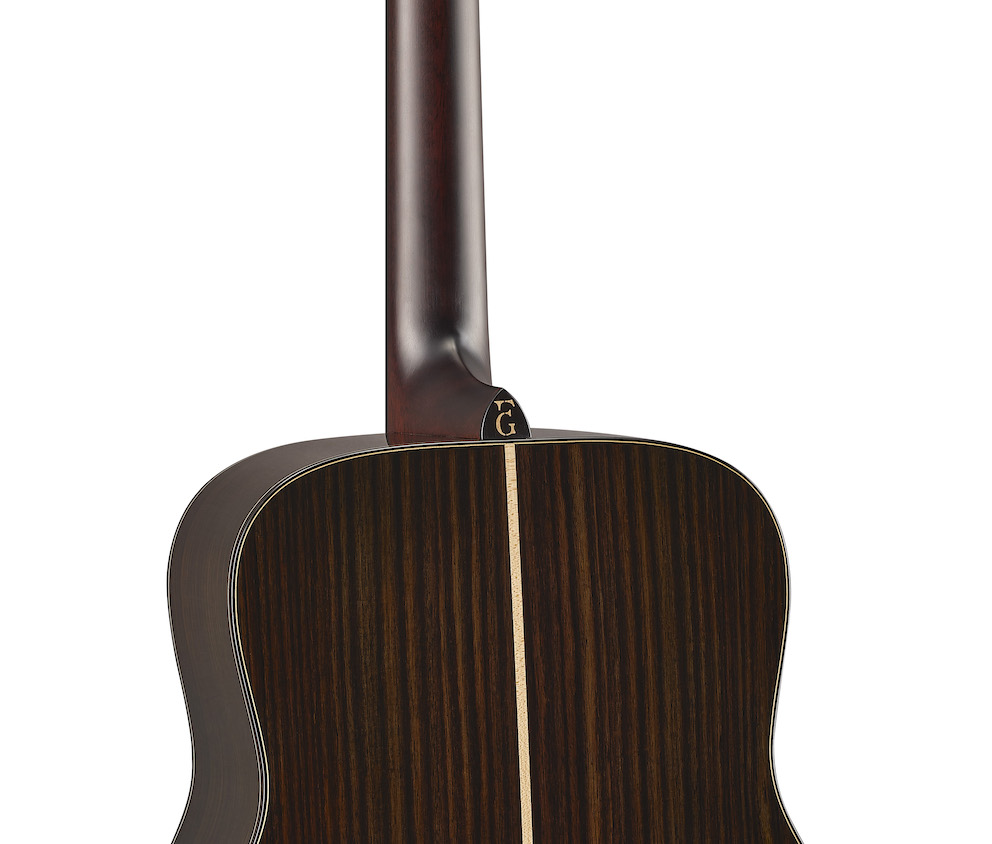
Finally, all FG9 X and FS9 X guitars come standard with a tweed hardshell case — the first I’ve seen from Yamaha. Very nice indeed!
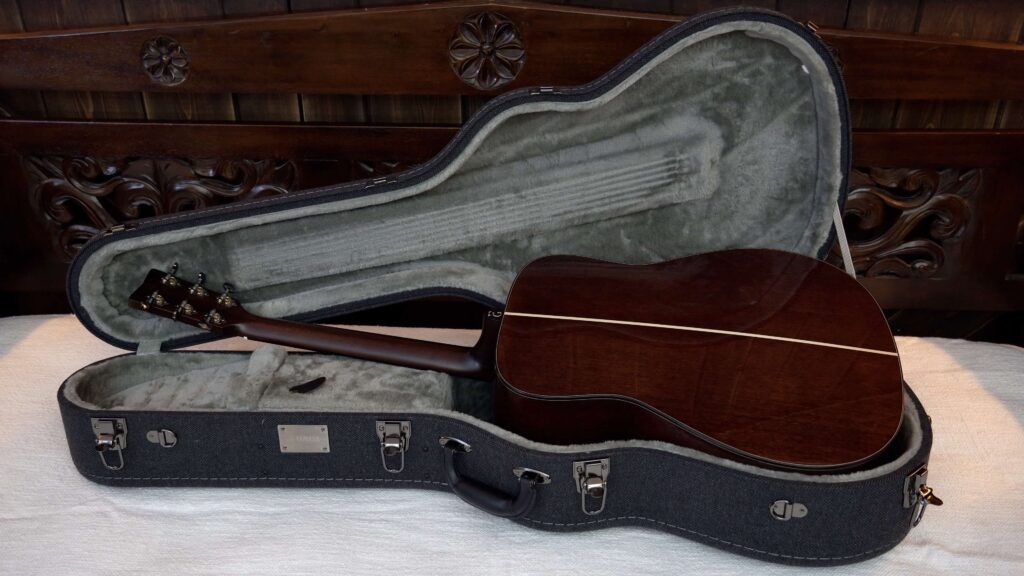
Tonality
The larger FG models exude more bass frequencies than their smaller FS concert-body brethren regardless of the body tonewood being used. I also found that FG X guitars were warmer for both picking and strumming passages than their equivalent FS X models, although the latter cut through a little better.
Of course, everyone’s tonal preferences are subjective, so I think you’ll be able to draw your own conclusions from the music and isolated sound samples in the video below.
The Video
To give you a solid comparison between the two guitars, I created this video, with me playing the exact same parts on an FS9 RX and an FG9 MX, including all overdubs and solo lines.
First up is the FS9 RX. I start with a fingerstyle passage, followed by a strumming part and solo slide lines with an added harmony a third above. Next, I play the same exact parts on an FG9 MX. The pickup settings on both guitars were exactly the same, and weren’t changed for any of the parts played.
Later in the video you’ll hear the main rhythm parts isolated for further comparison.
The Wrap-Up
I’ve been lucky enough to play and own some very nice acoustic guitars. The downside to every one of them was the quality of the amplified tone.
With the original FG9 and FS9, Yamaha crafted amazing guitars for the discerning player. The new “X” models add the ability to translate their extraordinary acoustic tones faithfully, either directly through a guitar amp, P.A. system or audio interface using the Atmosfeel pickup system.
If you value and demand playability, acoustic tone and ultimate flexibility from your acoustic guitar, the FG9 X and FS9 X should be very high on your list.
PHOTOGRAPHS COURTESY OF THE AUTHOR.










